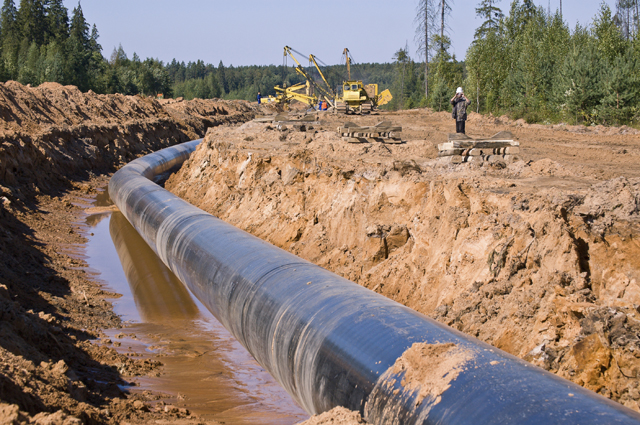28 August 2023–After an earthquake strikes in an area with a buried gas pipeline network, it can be critical to identify where potential damage to the pipeline might have occurred—especially since these networks can cover hundreds of kilometers and may sometimes not be easily accessible.
Forecasts of pipeline damage typically consider earthquake-induced ground failures like surface faulting, landslides, and liquefaction as separate key hazards. But a new methodology created by N. Simon Kwong and Kishor S. Jaiswal of the U.S. Geological Survey consistently combines these ground failure hazards with ground shaking hazard to provide a more comprehensive forecast for pipeline damage.
In the Bulletin of the Seismological Society of America, the researchers describe their probability-based methodology and how it performs in a scenario based on data from the 1994 Northridge earthquake and almost 4,000 kilometers of gas transmission pipeline in southern California, using leaks and breaks as a measure of the network’s performance.
Combining multiple hazards in this way shows that ground shaking might be a “non-negligible hazard to buried pipelines, because while ground failure hazards are substantially more damaging than shaking, ground failures do not always occur,” Kwong and Jaiswal conclude.
“There is an ongoing debate in the literature about the relative influence of ground shaking on buried pipelines, as the infrastructure would move with the soil layer it’s buried in,” Jaiswal explained.

“The reality is that both ground shaking and ground failures may impact pipeline operation and network performance, so that’s the inspiration and motivation to look at the hazards more collectively and carefully,” Jaiswal said.
Considering multiple hazards together remains an important challenge. For example, the U.S. Federal Emergency Management Agency (FEMA) Hazus tool for estimating pipeline damage from earthquakes evaluates ground failures separately from ground shaking, and then adds the results together.
“In our investigation, we aimed to develop a new methodology that systematically accounts for multiple hazards while propagating the underlying uncertainties for assessing network performance of buried infrastructure,” Kwong added.
Kwong also explained that “a pipeline network may span hundreds of kilometers, and subsurface conditions along the network can vary dramatically. The methodology described in the BSSA paper uses probability theory to unify both coarse and fine geospatial scales.”
“In our southern California example, we found that analyzing each hazard separately one at a time slightly overestimated the seismic risk to buried gas pipeline networks and that using median instead of mean repair rates substantially underestimated the risk,” Kwong and Jaiswal noted.
Researchers and pipeline operators can use the new methodology to compare ground truth observations of pipeline damage, which may be caused by multiple hazards, against predictions from multiple input models. Given input models, the methodology could also guide where to look for pipeline damage after an earthquake has occurred or forecast potential future damage from a specified earthquake scenario. Further, the underlying probability theory may facilitate development of maps of displacements from different types of ground failure.
The researchers caution that forecasts depend on the quality of input models used within the new methodology and high-quality models may not always be available in some applications such as forecasting earthquake damage to buried wastewater pipelines.
